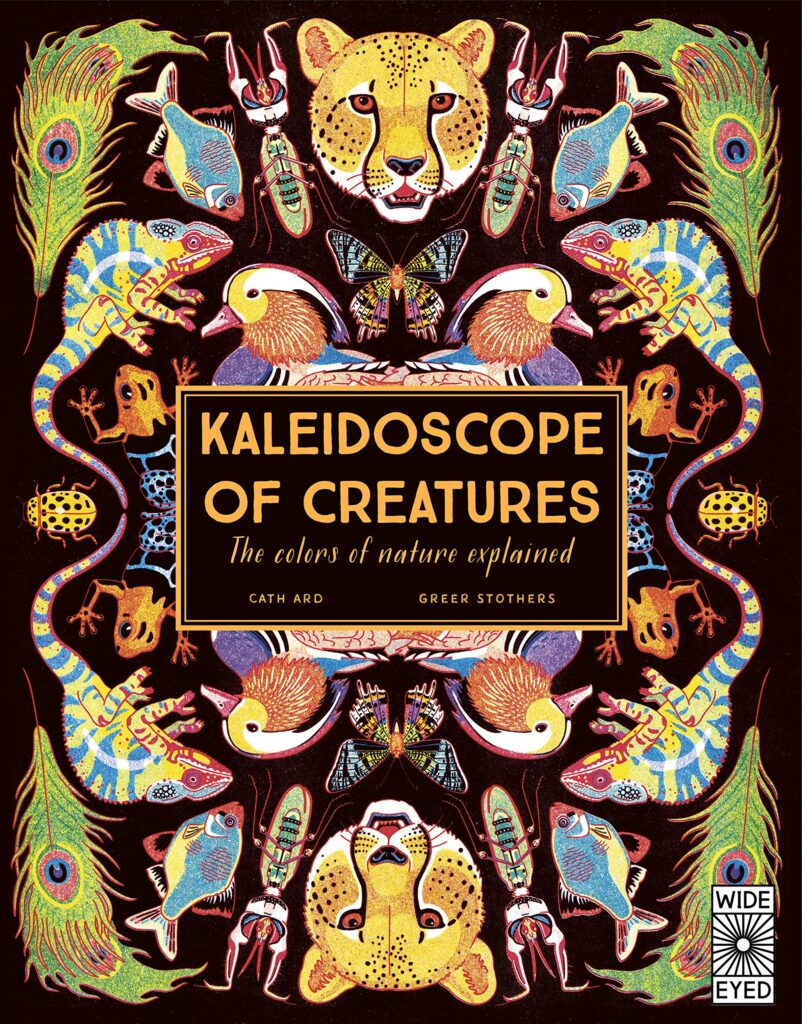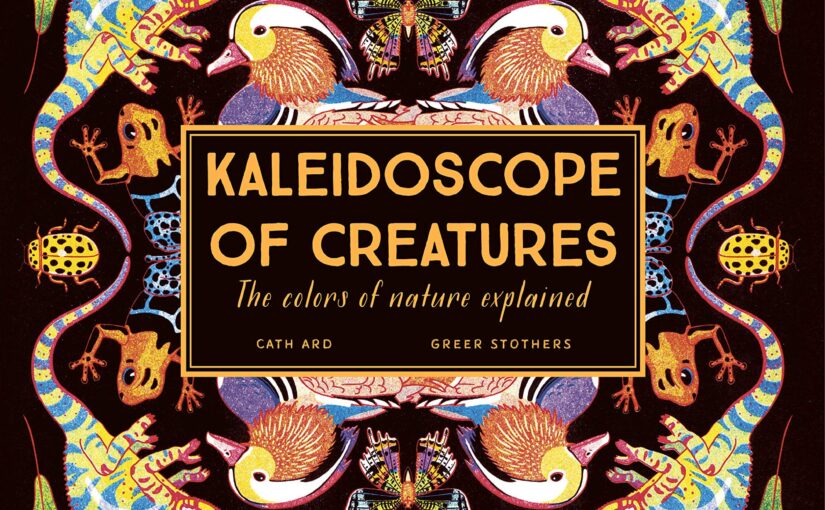I firmly believe that STEM and the concepts that make it up are ones that kids want to learn. It’s just that the information has to presented to them in ways that are interesting to those students. I know, back in my day the information was packaged in a granite block, we had to smash our hands against it to glean information; we liked it, and asked for more. However, what if the building blocks of classification and organization, specifically the animal kingdom were displayed in a hyper-inviting way that encouraged elementary-aged students to explore, learn, ask questions and add to what they’re being taught? That’s the idea behind Kaleidoscope of Creatures, The Colors of Nature Explained by Cath Ard with illustrations by Greer Stothers.

Kaleidoscope of Creatures creates an impact from the moment one picks up the book. Its cover is very thick cardboard with the pages consisting of thicker than average construction paper. The pages scream at you with their color, while every second and third page has a different background color than the two that proceeded it.
I’m writing this in front of a class of fourth-grade students with Kaleidoscope of Creatures open on my desk. The left page is hanging off the side of it and attracting lots of subdued, quiet attention from my incredibly well-behaved class. They want to ask if they can look at it, but know that they should be doing their math work.
The vividly colored, mirror-imaged animals set against the midnight black front cover, with its black inlaid letters are a friendly deep-sea anglerfish who is set upon informing and entertaining young readers. Alternately, it’s an educational Sea Siren who just wants kids to enjoy reading and discovering any number of animals and the myriad of ways that they could be classified.
From the get-go readers will discover that there are vertebrates and invertebrates, as well as many of the classifications that the latter could encompass. We see echinoderms, mollusks, bugs, and more, just to name a few, plus the basic characteristics that make up their spineless existence. Then readers will see the various colors that creatures could come in. Each animal is accompanied by a sentence or two about where they might live or what makes them special. The colors of the animals are contrasted by an almost opposite hue that the pages are printed on. This is one area where the magic of the book’s physical appearance will draw in people even if they aren’t usually attracted to STEM or nature books.
You’ll see rainbow, iridescent, stripes, spots, changing color critters, blending animals, those whose colors can imply danger, camouflage, can light up, poison others, and many more characteristics that otherwise wouldn’t go together. The result is a fascinating book that’s as relaxing to look at, as it is informative.
Kaleidoscope of Creatures does that, in addition to working as an introduction and mid-level conversation starter to classifying animals. Our youngest is working on those creatures with and without spines now. His older brother is doing the same thing, but on a much more advanced level. For both of them, Kaleidoscope of Creatures can be an asset and teach them something in an educational and resistance-free way. That final part of the previous sentence is where joy and happiness meet in regards to both the teacher and the student.
Kaleidoscope of Creatures The Colors of Nature Explained is by Cath Ard with illustrations by Greer Stothers and on Wide-Eyed Editions, and imprint of Quarto Knows.
There are affiliate links in this post.





 Facebook
Facebook Twitter
Twitter Flickr
Flickr GooglePlus
GooglePlus Youtube
Youtube